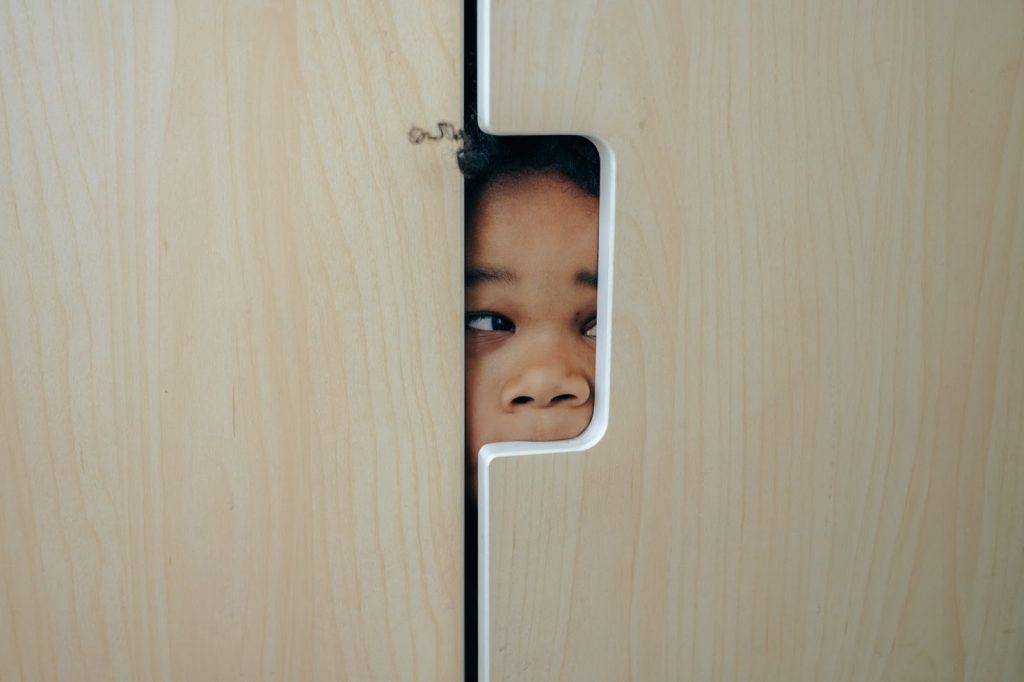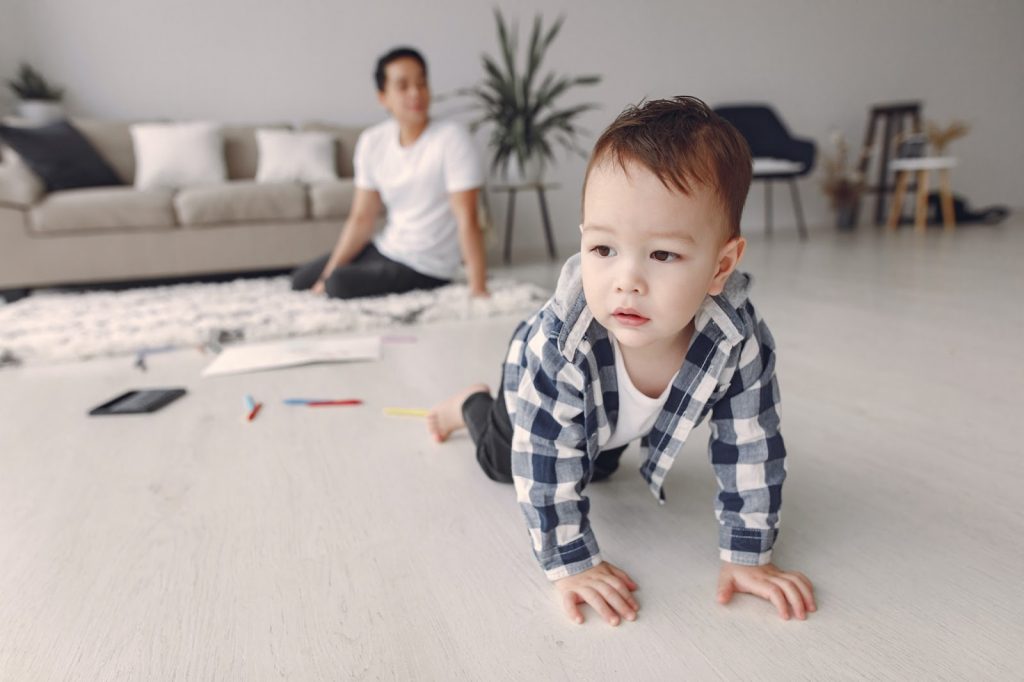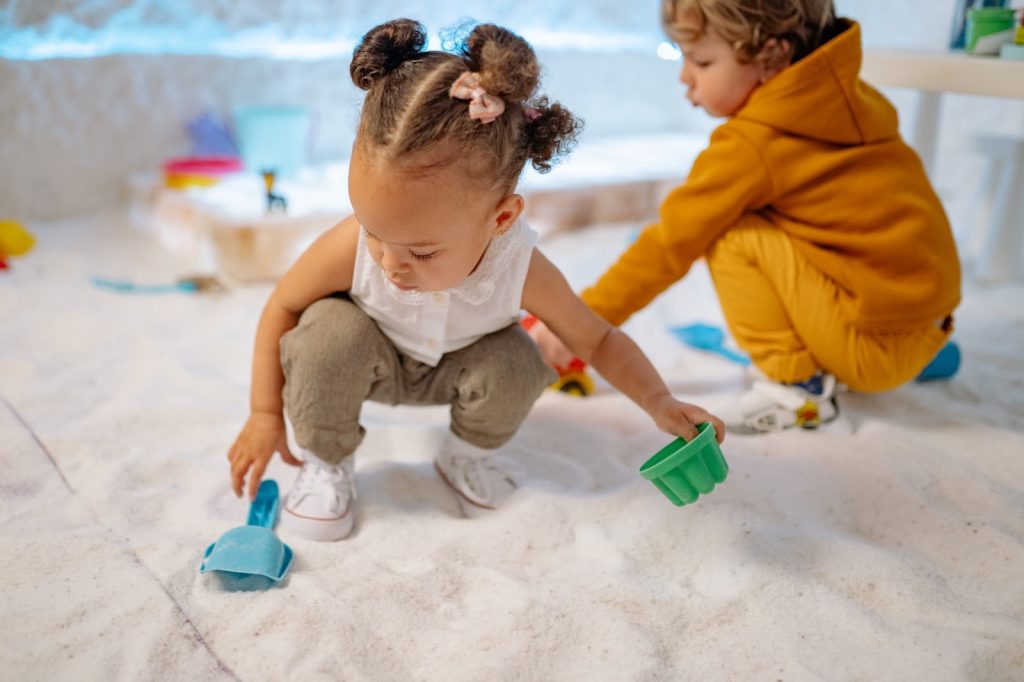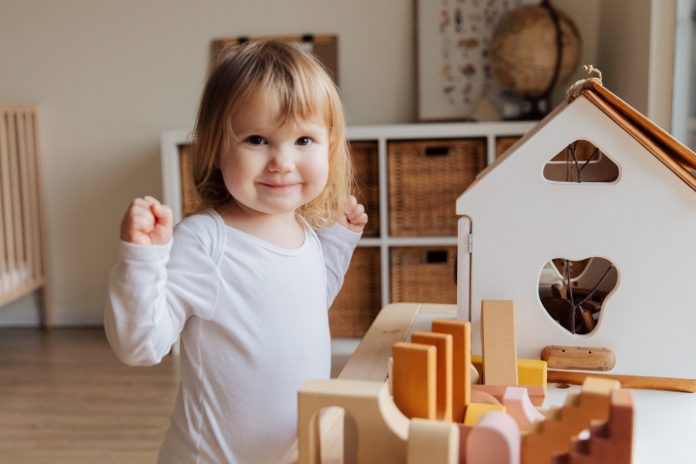Is your child around the age of one? This age is an interesting phase for a child’s growth and development and can invite panic and confusion into homes as parents contemplate how to best support and nurture their child’s growth and development.
Math & ELA | PreK To Grade 5
Kids see fun.
You see real learning outcomes.
Watch your kids fall in love with math & reading through our scientifically designed curriculum.
Parents, try for free Teachers, use for free
Is it too early for games? Should I hold off on trying to get my child to start speaking? Parents may have countless other questions about kicking off with age-appropriate activities for 1 year olds to engage and support their child’s sensory stimulation.
18 Fun & Learning Activities for 1-Year-Olds

As a parent, you should be relieved to know that you’re not alone in navigating these concerns. At this critical age, it is natural for 1 year olds to grab, touch, and graze on everything within their grasp as they learn to make sense of the world.
There are plenty of learning activities for 1 year olds that recognize this truth and are shaped around this behavior to ensure they naturally support your child’s growth and development. Let’s find out what they are!
1. Playing with Building Blocks
What you will need:
Larger-sized building blocks would be ideal
What to do:
Chances are that you have a bucket of building blocks lying around somewhere. Legos may be too small for a 1 year old, so try to ensure they have access to some of the larger, age-appropriate ones they can use to build and destroy towers and buildings.
What your child will learn:
Playing with building blocks offers a great way to develop your child’s fine motor skills while nurturing their creativity and offering a tactile, sensory experience.
2. Tickling
What you will need:
Just your child, and maybe some feathers, ribbons, or cloth
What to do:
Try tickling your child and see how they respond. Infants react positively to being tickled and have a great time with it. They won’t stop giggling, whether you use ribbons, a piece of cloth, or your hands. When it comes to activities for 12 month olds, tickling is hard to beat.
What your child will learn:
Being tickled should develop your child’s sensory awareness.
3. Playing with Rice
What you will need:
A large bowl filled with dry rice grains and a small cup
What to do:
Here’s one of the most fun activities for 1 year olds. All you have to do is set a bowl full of dry rice grains and a small cup in front of your child. Your child can enjoy scooping up the rice in their palms and feeling the grains of rice slip between their fingers. You can help them get creative with a cup and watch the rice grains fall from it and into the bowl. Scooping rice or plunging your hand into a bowlful of rice is always great fun.
What your child will learn:
Playing with rice should be a great tactile and sensory experience for your child.
4. Solving Puzzles
What you will need:
An age-appropriate puzzle set
What to do:
When it comes to indoor activities for 1 year olds, puzzles are a great way to engage. Unbox and set out the pieces of an age-appropriate puzzle in front of your child. Feel free to give them a hand to ensure they don’t get frustrated or overwhelmed as they figure out how the pieces fit into one another.
Solving puzzles is the perfect way to spend time at home with your little one, but if you’re interested in checking out other fantastic indoor activities for 1 year olds, we’ve curated a list of some of the best for you to check out.
What your child will learn:
Age-appropriate puzzles offer a fun way to challenge your child’s motor skills and problem-solving ability.

5. Playing Hide and Seek
What you will need:
Just your child and the comfort of your home
What to do:
It’s never too early for a game of hide and seek, so go ahead and introduce your child to this perfect pastime. There is no better (or safer) place to get started with hide and seek than the comfort of your own home.
What your child will learn:
Regular games of hide and seek can improve your child’s perception of object permanence.
6. Playing Simon Says
What you will need:
Just your child and the comfort of your home
What to do:
When it comes to educational activities for 1 year olds, Simon Says is tough to beat, so get started on a game of Simon Says today. Take turns with your child as you help them develop an understanding of the game.
You can have friends and family join in for a friendly game and see how it unfolds. You can even take the fun outdoors. For other great outdoor activities for 1 year olds, head on over to this SplashLearn post that walks you through some of the best.
What your child will learn:
A game of Simon Says should help your child develop their cognitive skills while offering a way to get some fun exercise in.
Related Reading: Best Outdoor Games for Kids of All Ages
7. Playing with Playdough
What you will need:
A comfortable space and some age-appropriate playdough
What to do:
Consider using edible playdough to keep this activity safe. Your child is sure to learn a lot as they engage with new shapes and textures. Help them nurture their creativity by making things yourself and allowing them to understand the possibilities of this material.
What your child will learn:
Playdough offers a great sensory experience for your child to experiment with new shapes and designs.
8. Playing with Food
What you will need:
Puree, dough, any batter based-food, and your child’s eating utensils
What to do:
Does your child give you a hard time when you’re trying to feed them, only to end up playing with their food? Well, why not just use food to offer them something to play with? Purees, dough, and batters promise a sensory-rich experience. Let your child use their fingers and mess about as they please.
What your child will learn:
Playing with food can help a child develop their fine motor skills while encouraging creative play.
9. Corn Flour Fun
What you will need:
A kiddie pool and corn flour
What to do:
When it comes to food related activities for 1 year olds, cornmeal is hard to beat and has to be mentioned. Get started by filling up a kiddie pool with cornmeal then tell your child to dive and start playing around with the cornmeal. Cornmeal is similar to sand in its materiality, but is also edible in case your young one gets extra curious while no one is looking.
What your child will learn:
The texture of corn flour should provide your child with tactile stimulation.

10. Crawling Around
What you will need:
Just the comfort of your home and your child
What to do:
Encourage your child to crawl or move around the house. Request them to follow you around as you move about. Keep them engaged with verbal and physical cues to ensure that their curiosity compels them to keep moving.
What your child will learn:
Encouraging your child to crawl or move around the house can be a stimulating exercise that not only develops their spatial awareness but also keeps them active.
Related Reading: Co-curricular Activities and its Benefits for Students
11. Finger and Hand Painting
What you will need:
Any non-toxic, child-friendly paint, a shirt for your child that you don’t mind getting dirty
What to do:
Your 1 year old may need some practice to get a hold of this craft, so make sure to take precautions and cover up your painting area to avoid accidents. You can start by showing your child how to work with the paint and encourage them to follow along. Activities for 1 year olds may be aplenty, but finger and hand painting is just one of those classics that one can’t go wrong with.
What your child will learn:
Finger or hand painting is a great tactile activity that allows your child to stimulate their senses.
12. Coloring
What you will need:
Any set of non-toxic or age-appropriate crayons or colored pencils, and a coloring book
What to do:
Sit down with your child and open up a coloring book. Pick up a colored pencil or crayon and start coloring away. Your child should be able to watch you and follow along on their own. This can be a great alternative to finger and hand painting if you’re looking to avoid a mess.
What your child will learn:
Holding crayons and colored pencils should improve your child’s fine motor skills.
13. Playing with Stickers
What you will need:
Any surface you don’t mind getting sticky, along with some peelable stickers
What to do:
You can start by lifting a little portion of a sticker to make it easier for your child to peel off the rest. After your child has removed the sticker, guide them towards the surface on which you’d like them to apply it. Show it to your child with another sticker, and watch them follow suit.
What your child will learn:
Peeling a sticker off a sheet and applying it on a surface involves motor skills and an improved understanding of cause and effect.
14. Making a Collage
What you will need:
A thick piece of paper, cotton balls, colored pieces of paper, dry macaroni, and any other material that can safely be glued on to paper
What to do:
Using glue to stick things like cotton balls, pieces of paper, dry macaroni, or leaves on a piece of paper to create a collage is a fun activity that your child can lead. Don’t tell them where the cotton skies or the grass goes. Let them decide.
What your child will learn:
This activity should develop your child’s fine motor skills and promote their sense of creativity.
15. Doodling with Chalk
What you will need:
A chalkboard (or a safe sidewalk outside your home) and some chalk
What to do:
All you need for this activity is some chalk and a sidewalk to get started! If you can get hold of a chalkboard, even better. Allowing your child to make patterns, shapes, and designs, or just doodle away can be a fun activity for your child.
If you’re a teacher looking for daycare activities for 1 year olds, it doesn’t get better than some playful doodling with chalk.
What your child will learn:
Doodling with pieces of chalk is a great way to support their fine motor skills. This activity should develop your child’s fine motor skills, and promote their sense of creativity.
16. Painting with a Sponge
What you will need:
A sponge, some thick paper, and non-toxic paint
What to do:
Lay out a large, thick piece of paper in front of your child, along with some paint, a bowl of water, and of course, a sponge. Guide your child to dip the sponge in the paint and move it around the piece of paper before them to see the shapes and patterns they can come up with. Try to make sure the sponges don’t soak too much paint to avoid making a mess.
What your child will learn:
Painting with a sponge is not only a fun way for your child to draw but also offers a sensory experience, unlike any other art activity.
17. Painting with Food
What you will need:
A large piece of paper and some applesauce
What to do:
Ever consider using applesauce as paint and letting your child paint and nibble away at the same time? This is a combination that screams fun and delicious. Try to make sure there’s some applesauce still left by the time your child is done with their masterpiece.
You can even blend a handful of spinach, half a cup of baby cereal, and some almond milk to create a safe and edible green paint that your child can use alongside the applesauce. For purple, blend five blueberries, half a cup of baby cereal and some almond milk.
What your child will learn:
Using applesauce to paint should be a tactile experience that encourages the development of your child’s fine motor skills.
18. Painting on Foil
What you will need:
Non-toxic acrylic paint, some aluminum foil, a piece of cardboard, and some clean cotton buds
What to do:
To get started, cover a piece of cardboard with aluminum foil. This will be your child’s canvas. Introduce them to a cotton bud, and demonstrate how it’ll work as their paintbrush. This should offer a unique painting experience for kids because the cotton buds will slide across easily over the foil, allowing your child to blend colors and create new patterns.
What your child will learn:
Using a thin cotton bud should test your child’s fine motor skills.
Related Reading: Easy Activities for Preschoolers
Importance of Education Through Activities for Kids
Learning through activities is an important part of a child’s holistic development. Allowing children to play encourages them to better understand themselves, their preferences, while releasing extra energy and staying healthy! As parents and teachers, encouraging them to play is crucial to nurture the learning potential it offers.
Time to Get Learning!

When it comes to activities for one year olds, you don’t necessarily have to choose between learning and fun. With so many great activities that combine learning and fun, you can rest assured that your little one’s playtime will also ensure the development of their cognitive, social, and motor skills, among others.
Let’s find more online educational resources and printable worksheets for kids that will help with their learning experience and make them smarter.
Frequently Asked Questions (FAQs)
Apart from learning, what impact do these activities have on my 1 year old?
Whether you’ve pulled out a puzzle for your toddler on a rainy day or spent some time painting with your hands on the weekend, these activities can be a great bonding exercise for parents to connect with their children. Similarly, teachers will find these activities to help build a relationship with their daycare toddlers.
How many activities should I try to engage my 1 year old with throughout the day?
This is something that depends entirely on your toddler and their mileage for fun. As long as your 1 year old does not feel overwhelmed with repeated exposure to new experiences and enjoys their time wherever they are, you shouldn’t have to worry about an upper or lower limit.
























